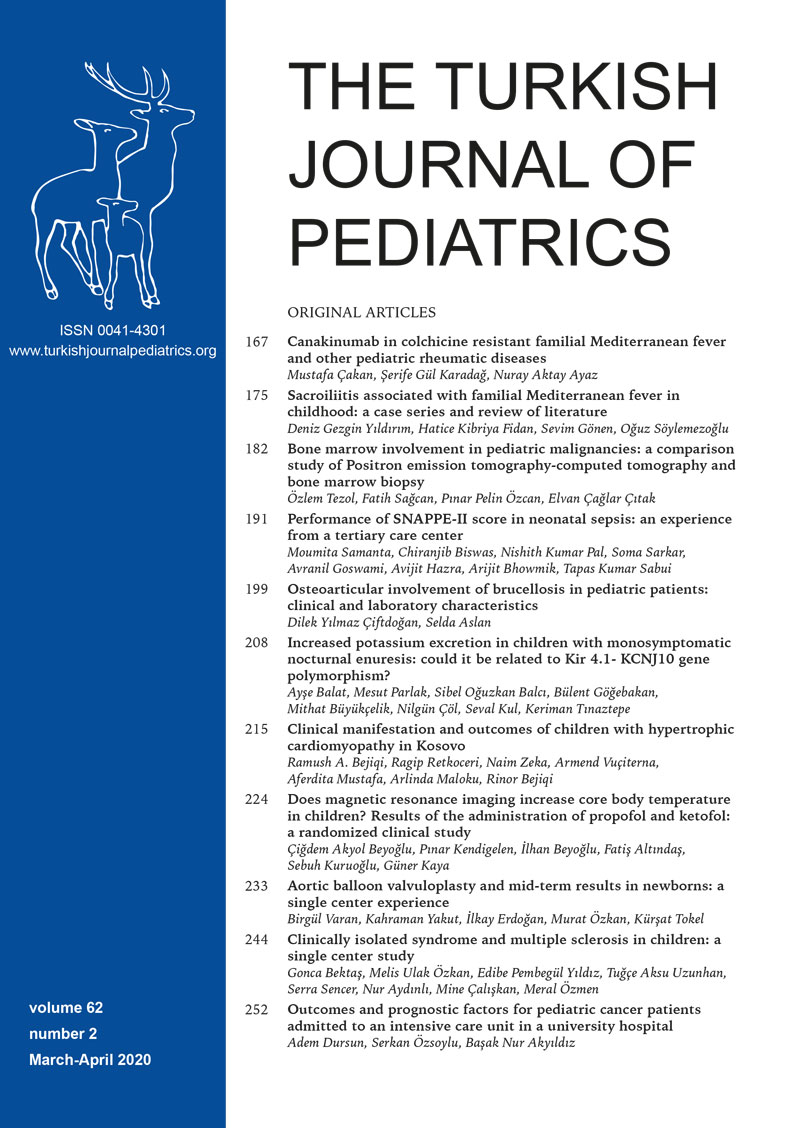Abstract
Background and Objectives. This study was conducted to determine the differences in clinical and radiological features at the first demyelinating event in children with clinically isolated syndrome (CIS) and multiple sclerosis (MS).
Methods. This was a single center retrospective cohort study of the children with CIS followed-up at Istanbul University Faculty of Medicine, Department of Pediatric Neurology, between 2010 and 2018. Children with CIS who were assessed at 3, 6, 12 and 24 months following their first identified demyelinating event were included. Demographic data, mode of presentation and the presence of the oligoclonal band in the cerebrospinal fluid (CSF) were abstracted from the medical records. Magnetic resonance imaging of the brain and spinal cord was analyzed for the location, number, size and gadolinium enhancement of the lesions.
Results. A total of 51 patients` data was assessed, 38 patients at a mean age of 12.3 years were enrolled in the study. Twenty-seven children (71%) evolved into clinically definite MS after a mean follow-up of 11 months. Older age at first demyelinating event and the presence of the oligoclonal band in CSF were tended to be more common in patients with MS than patients with CIS (p < 0.05). The increased number of T2-hyperintense lesion and the presence of the lesion in periventricular, infratentorial and corpus callosum were associated with a tendency for development of MS (p < 0.05).
Conclusion. Older age at first demyelinating event, the presence of the oligoclonal band in CSF, the number and localization of T2-hyperintense lesion were associated with a tendency for development of MS.
Keywords: child, clinically isolated syndrome, multiple sclerosis
Copyright and license
Copyright © 2020 The Author(s). This is an open access article distributed under the Creative Commons Attribution License (CC BY), which permits unrestricted use, distribution, and reproduction in any medium or format, provided the original work is properly cited.














